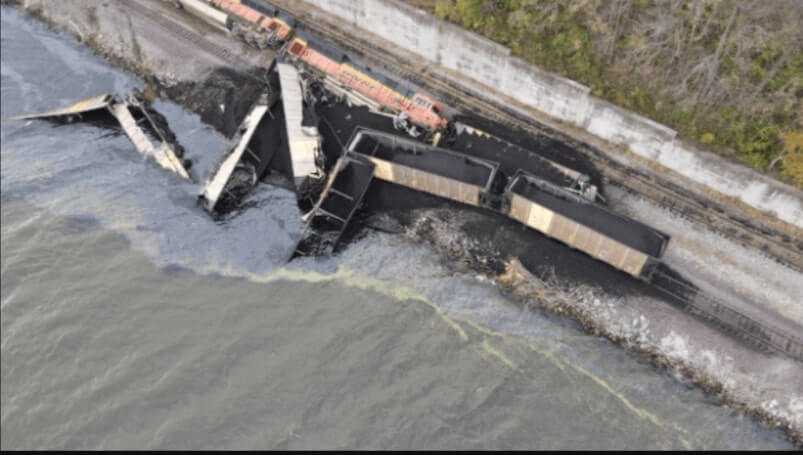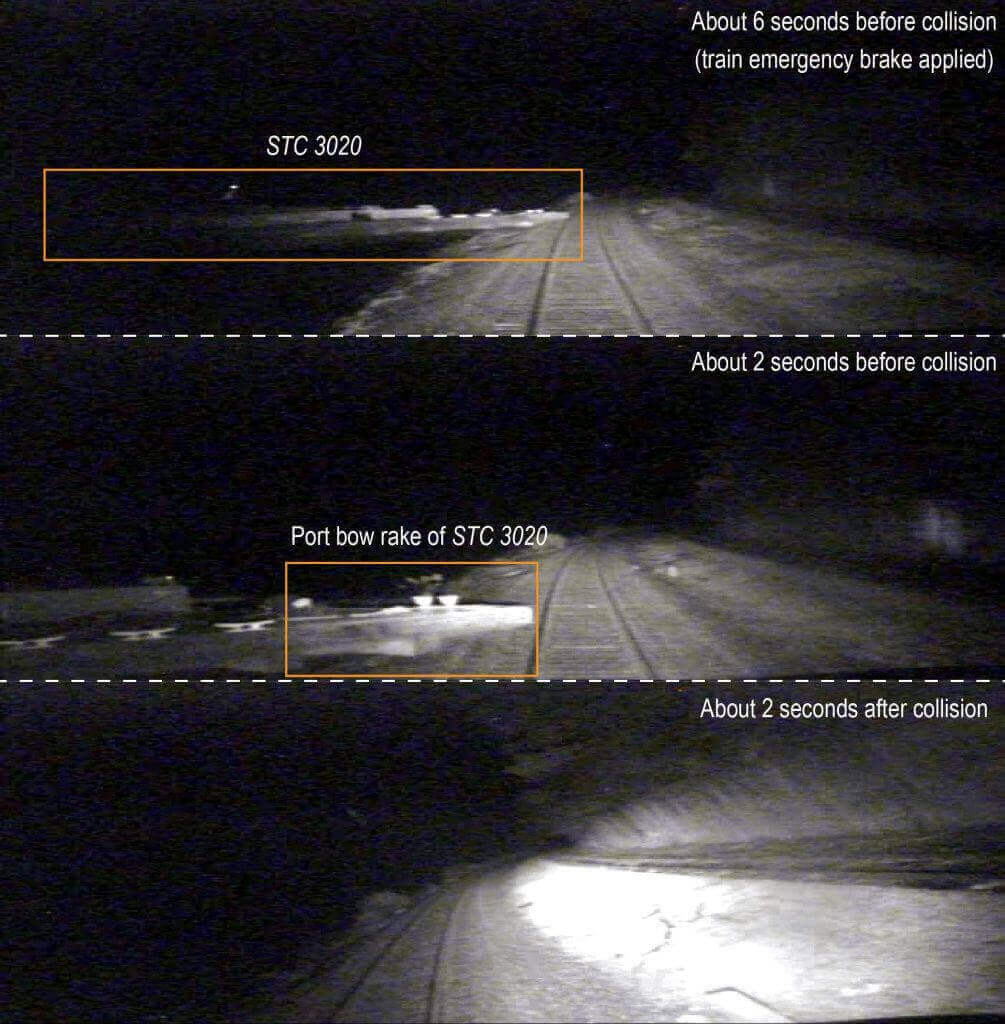Failure to Read Charted Warnings Leads to Train-Barge Collision

September 16, 2022:
The towboat’s crew was unaware that they had temporarily berthed the bow of a barge over a rail line, according to the findings of the NTSB’s inquiry into the collision between a moving train and the towboat Baxter Southern on the Upper Mississippi in late 2021.
The towboat Baxter Southern was traveling downstream on the Mississippi on November 13, 2021, pulling four empty barges into Louisiana. Around 2200, the wind increased with gusts as high as 35 knots, making it challenging for the 700-foot-long empty barge tow to navigate.
According to the forecast, the winds will last all night. The master discussed the options with the pilot and decided against trying to turn around and travel back upriver or continue on to the next lock. Instead, they made the decision to wait for better weather by pushing the barges up against a bank.
They chose a place with a magenta dashed line around it that had no trees or other obvious obstacles using a non-ECDIS electronic chart system. They knew there was a rail line nearby, but they didn’t think it posed a serious threat. No lookout was positioned on the bow as they approached the shore due to the bad weather.
The master stepped off the bridge at 23:36 when the bow rake of the barge tow was jammed up against the bank. To make sure the bow wasn’t obstructing the track, three crew men were sent forward. The lights of an incoming train could be seen by the deckhands 2,000 feet to the north before they arrived at the head of the tow.
The conductor and engineer noticed the barge tow and the towboat at at 23:42 but were unconcerned because barges were frequently pressed up against the bank in this area. As per protocol, they sped along a straight portion of the track in the direction of the barge.
The engineer noticed that the barge’s bow was encroaching on the rail bed a minute later, when the locomotive was just 300 feet away from collision, and he applied the emergency stop. The towboat’s pilot, who was still on the bridge, noticed what was happening and tried to back off the bank by putting the throttles in reverse, but it was too late.

Nine seconds later, the lead locomotive’s left side collided with the bow of the barge and derailed. Following the first locomotive were ten hopper cars, six of which submerged in the river, then the second locomotive. No one on board the Baxter Southern crew was hurt; the engineer and conductor only suffered minor wounds and managed to free themselves from the locomotive.
After the incident, the Baxter Southern’s skipper moved upriver to another berthing spot, backed off the bank, and called the Coast Guard. The lead barge received slight scraping and denting, but nothing that would compromise its structural integrity.
The master and pilot, who together had roughly 30 years of experience in the towing business, admitted to the investigators that they had not noticed the exclamation point chart symbol on their ECS chart covering the bank area. If they had clicked on the symbol, they would have been alerted to a “Barge/Rail Collision Risk” at the location.
The pilot reported that he had previously berthed barges in the same position “maybe half a dozen times,” and earlier AIS data appeared to indicate that other operators had also done so. The tow’s pilot and captain “failed to appropriately identify a danger region on the electronic chart,” according to the NTSB‘s conclusion, and it recommended mariners and owners to ensure proficiency in the use of electronic chart systems.
Also Read: Greenpeace Stops Russian LNG Tanker at Swedish Port
Click here to join our Telegram chanel
You will get information, news, and support related to Merchant Navy.
